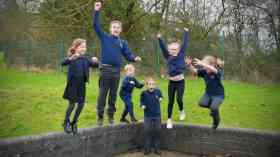In November 2020 I was told I had 6 months left to live and was at risk of sudden death, due to a colloid cyst in my brain.
Supplier Focus
Latest Supplier News
Borg & Overström is a UK manufacturer of premium drinking water solutions. For over 20 years Borg & Overström has developed sustainable, bottle-less, hygienic, drinking water dispensers with the aim to provide exceptional, safe, self-service drinking water into schools, universities, workplaces and communal spaces.

 With one in three children in the UK now overweight and one in five obese the argument for raising physical education (PE) to the same status as maths, English and science is becoming increasingly convincing. Research by the universities of Strathclyde and Dundee on the positive impact that exercise can have on academic achievement amongst teenagers offers another reason to prioritise physical activity for school children. The findings demonstrate an overall improvement in brain function, while games that are unpredictable and require problem-solving may also boost the brain’s executive functioning, which can transfer to academic tasks.
With one in three children in the UK now overweight and one in five obese the argument for raising physical education (PE) to the same status as maths, English and science is becoming increasingly convincing. Research by the universities of Strathclyde and Dundee on the positive impact that exercise can have on academic achievement amongst teenagers offers another reason to prioritise physical activity for school children. The findings demonstrate an overall improvement in brain function, while games that are unpredictable and require problem-solving may also boost the brain’s executive functioning, which can transfer to academic tasks. 








